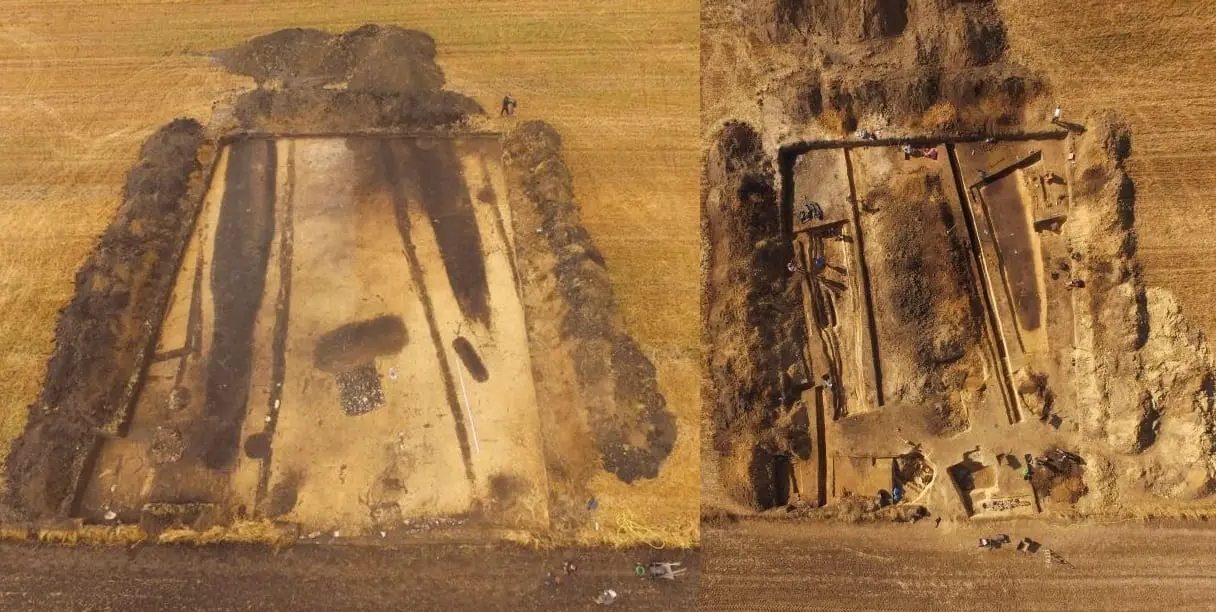Archaeologists excavating in Poland have discovered a large megalithic complex, containing several dozen tombs dating from 5500 years ago.
The site was discovered by chance near the village of Dębiany in south-central Poland, by a team of archaeologists conducting research of satellite imagery.
Upon noticing a quadrilateral shaped feature with a surrounding ditch, a geophysical survey was conducted that revealed a megalithic tomb. Extending their study area, the team have identified dozens of tomb burials, with many more expected to yet be discovered.
Each tomb is lined with wooden poles (in contrast to most megalithic tombs in Poland being lined with stone) in a raised burial mound shaped like an elongated trapezoid. The exterior of the tomb is marked by a wooden palisade (evident by a series of post-holes), and outer ditches that runs for between 40-50 metres in length.
Archaeologist Marcin M. Przybyła told Nauka W Polsce: “Unfortunately, most of the remains of the deceased and grave goods were removed from these burials while the cemetery was still in use. It was a ritual behaviour that we often encounter in cemeteries from that period”.
Surrounding some of the tombs is a square defensive feature built during the 9-10th century BC during the Period V (late) Bronze Age, that archaeologists believe served as a temporary military encampment.
Header Image Credit : J Bulas







